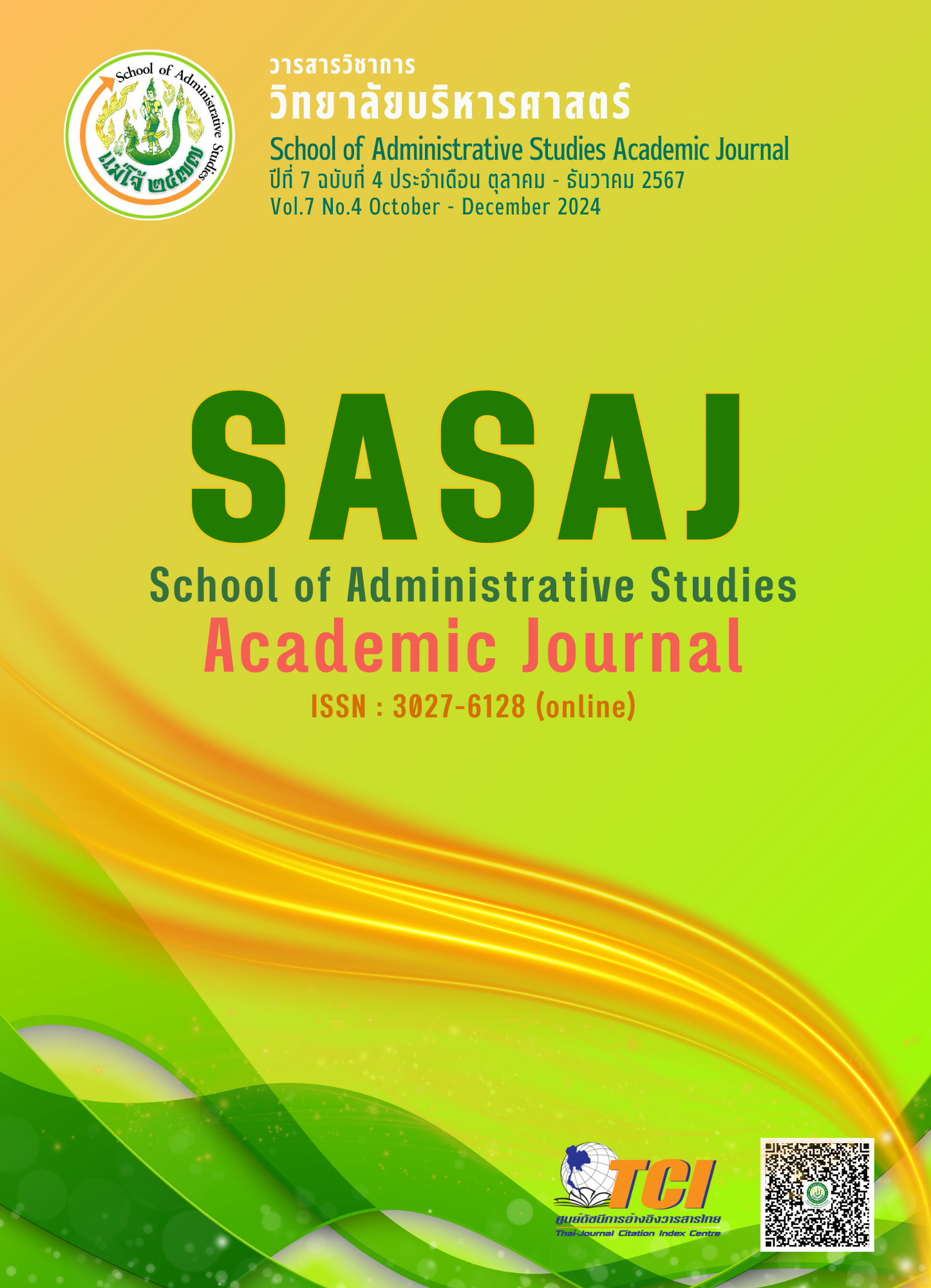Patterns of Creative Tourism of Community Enterprises in Ubon Ratchathani Province
Main Article Content
Abstract
This research has the objectives: 1) patterns of creative tourism of community enterprises in Ubon Ratchathani province and 2) to study the success factors of patterns of creative tourism of community enterprises in Ubon Ratchathani province. This was a combination of quantitative and qualitative research. The study area was the Kin Khao Sao Huean Sa Som homestay community enterprise of Khong Chiam district, Ubon Ratchathani province. The tool for quantitative research was a questionnaire to collect data from 80 representatives of the Kin Khao Sao Huean Sa Som homestay community enterprise and the samples were selected using purposive sampling. Data were analyzed using descriptive statistic. The tool for qualitative research was a semi-structured interview to collect in-depth information from the target group, 20 representatives from the Kin Khao Sao Huean community enterprise of Sasom homestay, government and private sectors in tourism and the samples were selected using purposive sampling. Content analysis was used.
The results of the study showed that the patterns of creative tourism of community enterprises in Ubon Ratchathani province in homestay innovation were at a high level in every aspect (= 3.82). Criteria and indicators for sustainable tourism were at a high level in every aspect (
= 3.84). There were outstanding nature and cultural tourism and Isaan local wisdom. The analysis of success factors for community-based creative tourism found that its strength was the abundance of natural resources that various activities could be organized to support tourists. The weaknesses were the language skills of people in the community and the lack of technology application to help collect data and develop online marketing. The opportunity was the continuous support from government, private, and local agencies. The obstacle was basic public utility. Therefore, the development to create community-based creative tourism must come from the cooperation of the community in implementing the policy along with driving and creating new innovations especially applying technology to meet the demands of tourists for better quality.
Article Details

This work is licensed under a Creative Commons Attribution-NonCommercial-NoDerivatives 4.0 International License.
ลิขสิทธิ์
References
กนกรัตน์ ดวงพิกุล, และ จารุนันท์ เมธะพันธุ์. (2561). โฮมสเตย์กับการจัดการท่องเที่ยวอย่างยั่งยืนในจังหวัดน่าน. วารสารบัณฑิตวิจัย, 9(1), 217-234.
กระทรวงการท่องเที่ยวและกีฬา. (2560). คู่มือการบริหารจัดการแหล่งท่องเที่ยวเชิงสร้างสรรค์. กรุงเทพฯ: กรมการท่องเที่ยว กระทรวงการท่องเที่ยวและกีฬา.
กุลวดี ละม้ายจีน, เนียนนิภา สำเนียงเสนาะ, และ ภูวดล งามมาก. (2564). การพัฒนาการท่องเที่ยวโดยชุมชนเชิงสร้างสรรค์เพื่อส่งเสริมการท่องเที่ยวในพื้นที่เมืองรองชุมชนซะซอม ตำบลนาโพธิ์กลาง อำเภอโขงเจียม จังหวัดอุบลราชธานี. วารสารมนุษยศาสตร์และสังคมศาสตร์ มหาวิทยาลัยราชภัฏอุบลราชธานี, 12(1), 76-86.
คณะกรรมการนโยบายการท่องเที่ยวแห่งชาติ. (2566). แผนพัฒนาการท่องเที่ยวแห่งชาติ ฉบับที่ 3 (พ.ศ. 2566-2570). สืบค้นจาก https://anyflip.com/zzfck/rptc
ชูศักดิ์ อินทมนต์, และ ศรัณยา เลิศพุทธลักษณ์. (2562). รูปแบบการจัดการธุรกิจนวัตกรรมโฮมสเตย์ในชุมชนสำหรับนักท่องเที่ยว. วารสารมหาวิทยาลัยศิลปากร, 39(6), 85-103.
ธง คำเกิด, อุทุมพร เรืองฤทธิ์, เพียงฤทัย เสงี่ยมศิลป์, จิตราภรณ์ เถรวัตร, และ ชิดชนก มากจันทร์. (2563). การจัดการท่องเที่ยวโดยชุมชนบนฐานรากวิถีชีวิตชุมชนอย่างยั่งยืนของตำบลต้นตาล อำเภอสองพี่น้อง จังหวัดสุพรรณบุรี (รายงานวิจัย). สุพรรณบุรี: มหาวิทยาลัยเทคโนโลยีราชมงคลสุวรรณภูมิ ศูนย์สุพรรณบุรี.
สริตา ศรีสุวรรณ, และ บงกช เดชมิตร. (2562). แนวทางการจัดการที่พักแบบโฮมสเตย์ให้คงเสน่ห์ และแตกต่างอย่างมีอัตลักษณ์เพื่อตอบโจทย์การท่องเที่ยวอย่างยั่งยืน. วารสารการจัดการธุรกิจ มหาวิทยาลัยบูรพา, 8(1), 1-13.
องค์การบริหารการพัฒนาพื้นที่พิเศษเพื่อการท่องเที่ยวอย่างยั่งยืน. (2561). คู่มือกระบวนการพัฒนาและยกระดับกิจกรรมท่องเที่ยวเชิงสร้างสรรค์. กรุงเทพฯ: บริษัทบุ๊คพลัส พับลิชชิ่ง.
เอื้อมพร หลินเจริญ. (2554). การพัฒนารูปแบบการจัดกระบวนการเรียนรู้ เรื่องการศึกษาชุมชนเพื่อสืบค้นองค์ความรู้และภูมิปัญญาท้องถิ่น (รายงานวิจัย). พิษณุโลก: มหาวิทยาลัยราชภัฏพิบูลสงคราม.


